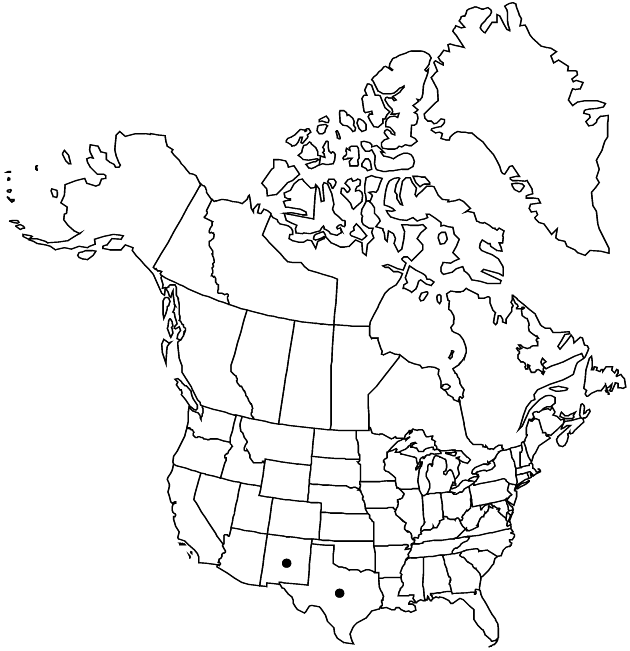Difference between revisions of "Brickellia laciniata"
Smithsonian Contr. Knowl. 3(5): 87. 1852.
FNA>Volume Importer |
FNA>Volume Importer |
||
| Line 46: | Line 46: | ||
|publication year=1852 | |publication year=1852 | ||
|special status= | |special status= | ||
| − | |source xml=https://jpend@bitbucket.org/aafc-mbb/fna-data-curation.git/src/ | + | |source xml=https://jpend@bitbucket.org/aafc-mbb/fna-data-curation.git/src/f6b125a955440c0872999024f038d74684f65921/coarse_grained_fna_xml/V19-20-21/V21_1271.xml |
|tribe=Asteraceae tribe Eupatorieae | |tribe=Asteraceae tribe Eupatorieae | ||
|genus=Brickellia | |genus=Brickellia | ||
Revision as of 18:46, 24 September 2019
Shrubs, 60–120 cm. Stems much branched, pubescent, gland-dotted. Leaves alternate; petioles 2–5 mm; blades 3-nerved from bases, oblong to broadly ovate, 6–15 × 5–9 mm, bases narrowly cuneate, margins irregularly dentate, apices acute to obtuse, faces sparsely pubescent, gland-dotted. Heads in (leafy) paniculiform or racemiform arrays. Peduncles 0.5–2.5 mm, glandular-viscid. Involucres cylindric, 6–8 mm. Phyllaries 15–25 in 4–6 series, stramineous, 3–5-striate, unequal, (gland-dotted) margins scarious (apices obtuse to acute); outer ovate, inner lanceolate. Florets 8–14; corollas pale yellow-green, often purple-tinged, 4.8–5.7 mm. Cypselae 2.5–3 mm, sparsely pubescent or strigose; pappi of 24–28 tawny, barbellate bristles. 2n = 18.
Phenology: Flowering Aug–Nov.
Habitat: Dry slopes, streambeds (arroyos)
Elevation: 1300–1900 m
Distribution

N.Mex., Tex., Mexico.
Discussion
Selected References
None.